Andrew Skurka's Blog, page 52
March 10, 2017
Shelter Comparison: Mids vs. the High Route Tent
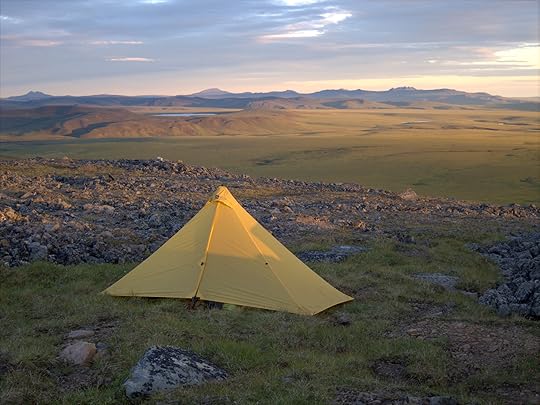
This post was prompted by an email from reader Jim that started with,
If you were to do your Alaska-Yukon Expedition again, would you take the Sierra Designs High Route Tent?
Jim was deliberating between the purchase of a High Route and a more traditional pyramid-shaped shelter (“mid”), and he hoped that I would shed insight on the differences.
While I have discussed them in multiple places, I have not yet written a dedicated post. It’d probably be useful — I’m sure he is not alone in deciding between a mid and the High Route.
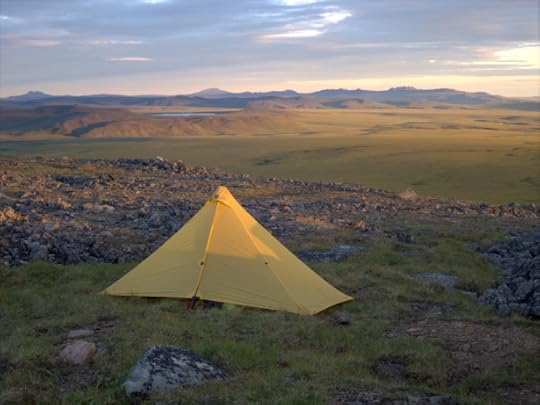
My MLD SoloMid in the Yukon Arctic, July 2010. If you want the most wind-resistant shelter for the least amount of weight, get a mid. If you are willing to sacrifice some weight and wind-resistance, the High Route has many other advantages.
Executive summary
If you don’t care for the details, let me spare you. If you are looking for the most wind-resistant shelter for the least amount of weight, buy a mid, such as the:
Mountain Laurel Designs SoloMid,
Black Diamond Beta Light, or
Sierra Designs Mountain Guide Tarp.
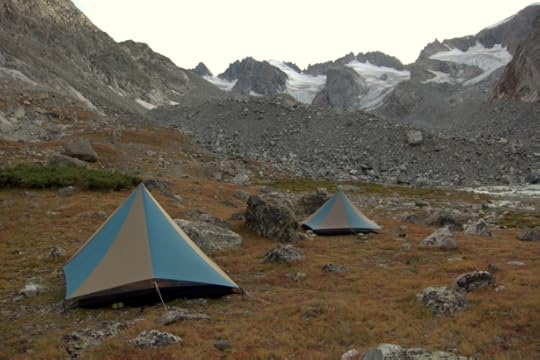
Black Diamond Mega Light mids below Gannett Peak in Wyoming’s Wind River Range
However, if you are willing to sacrifice some wind-resistance and weight-savings, consider the Sierra Designs High Route Tent 1FL. In exchange, you will get:
Better ventilation, and therefore less condensation;
More interior volume;
Dry entry and exit; and,
A pole configuration that does not block entryways, divide up the sleeping area, or hinder movement inside the shelter.
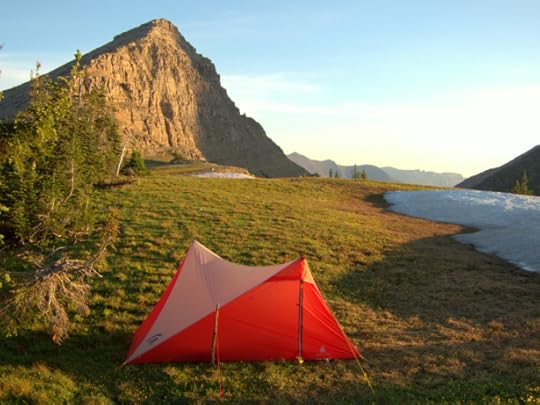
The Sierra Designs High Route Tent in Glacier National Park
All things being equal
Shelters within the same category — in this specific case, mids — perform similarly, but not identically. This discussion will focus on the general truths, with respect to the High Route.
To prevent a treatise-length post, I will assume “all other things being equal,” and ignore model-specific characteristics like retail price, country of origin, customer service, spec weight, fabrics, dimensions, construction quality, and little features like interior storage pockets.
Of course, I know these details matter while shelter shopping. So if you would like to dive deeper on one particular shelter relative to the High Route, leave a comment and we can chat.
Nests
The High Route and most mids are modular, whereby the fly and an inner tent body can be used together or independently. Some mids like the ZPacks Solplex are single-wall, whereby the fly and tent body are attached. This makes for a simpler but less versatile shelter.
At least to me, the inner tent body is the much less interesting component, and I don’t mention it again after this point. I use it for about six weeks per year, when the bugs are out all night; otherwise, I carry only the fly. Moreover, the design of the fly has a larger impact on the performance of the shelter. Inner tent bodies are all about the same: they keep occupants protected from bugs and ground water.
Design differences: Mids vs the High Route
The High Route Tent was inspired by mids, a shelter type with which I have extensive experience. Cumulatively, I have slept in mids for months in Alaska, Yukon, Iceland, and the Rockies; and I’ve had dozens of clients on my guided trips who owned or borrowed one.
When I was given the opportunity to co-develop a shelter with Sierra Designs, my goal was to fix the inherent shortcomings of mids, while sacrificing as little as possible. The result, the High Route Tent, has two unique features:
1. Offset pole positions, with a ridgeline that is at a diagonal to the sleeping position and the side walls.
2. Vertical side walls, rather than sloping.
What are the pros and cons of these features? Let’s discuss them.
Con: Weight
The High Route has more surface area than a mid with the same footprint and height, and therefore will be heavier.
The reality is a few ounces worse than that, because the High Route has two doors (and two 3.5-foot long #5 zippers), whereas most mids have just one.
Obviously, more surface area and two doors have advantages, and we’ll get there soon. But, in terms of weight, it’s a disadvantage.

The weight of the High Route’s fly is 21.4 oz without guylines, 22.8 oz with. That’s a few ounces heavier than a mid of the same height and footprint, due to the additional surface area of the High Route plus two door zippers.
Con: Wind-resistance
Mids have sloping walls, which improves aerodynamics. The most wind-resistant models have low-angle walls and multiple panels — imagine a low-to-the-ground tipi or the MLD Trailstar.
In comparison, the High Route has two vertical side doors. These catch more wind than those of even a bipolar mid like the aforementioned BD Beta Light or discontinued GoLite Shangri La 2, which have long broadsides. The High Route’s problem is partially mitigated by the positioning of the trekking poles — they help reinforce the doors.
Wash: Snow shedding
A comparison of snow-shedding ability is mixed. The High Route fly consists of three types of panels:
Two vertical side doors, which catch no snow;
Two steeply sloping head/foot panels, which shed snow very well; and,
Two moderately sloping roof panels, which do okay.
A mid with steeper walls like the My Trail Company Pyramid 3 will shed snow better than the High Route. But the low-profile Trailstar may do worse. This is a model-by-model consideration, not wholly true one way or the other.
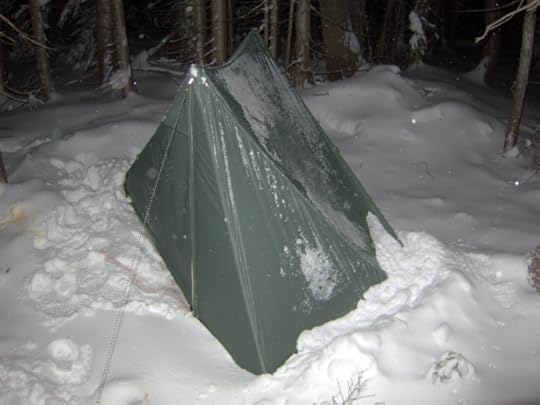
A High Route prototype the morning after a fresh 4-5 inches of early-season snow in October in Colorado. Due to its steep wall angles, it sheds snow better than wind.
Pro: Ventilation
The most effective strategy for minimizing condensation inside your shelter is campsite selection. Read this tutorial to improve your skills.
Shelter design matters, too: the bigger the air vents, the better.
Mids have sloping walls and normally one door. When it’s raining, this door must be kept closed (to prevent rain from entering the shelter), which limits the ventilation to the bottom perimeter and perhaps small apex vents. On calm nights with high humidity (which is often the case when it’s raining), better ventilation would be helpful.
While mids can be pitched high off the ground (as can the High Route) to improve perimeter ventilation, this leaves the occupant vulnerable to rain splatter and unexpected winds.
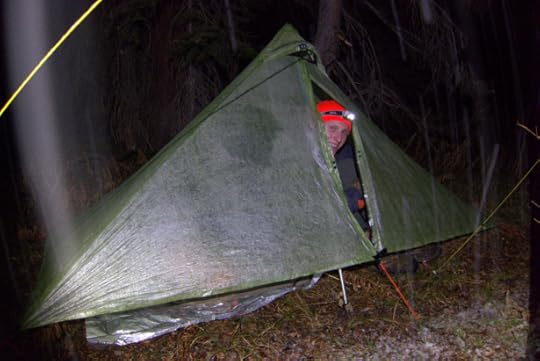
Steve briefly pokes his head out during a light rain/snow storm in Colorado. To fully protect the interior, the door must be closed, which limits ventilation.
The High Route has much better ventilation than mids. The side doors can be kept open when it’s raining (or porched out), without exposing the interior to falling precip. And the two doors allow for cross-ventilation.

With its double doors and vertical side walls, the High Route vents extremely well, even when it’s raining or snowing — the doors can be opened or porched without exposing the inside to the elements.
Pro: Interior volume
For its footprint and height, the High Route has more interior space than any mid. Its steep head/foot panels are rivaled by bipolar mids, but its vertical side walls put it in another category.
In addition to its favorable shape, the High Route is also generously sized; it’s actually large enough for two people. The fly is 4 feet wide and 9 feet long. Its two apexes are 4 feet tall, and separated by a 4-foot ridgeline with a slight catenary curve. Finally, in calm weather the High Route’s doors can be porched outwards, creating even more covered space.
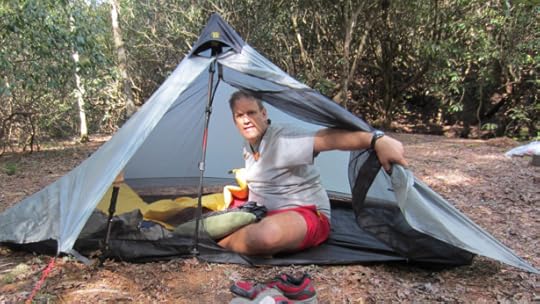
The SMD Lunar Solo has about the same size footprint and height as the High Route, but has much less interior space due to low-angle side walls. Especially at the head/foot and for larger backpackers, it’s cramped. The ZPacks Solplex shares this same drawback.
Pro: Dry entry/exit
If you need to crawl into or out of your shelter in a downpour, or even a steady drizzle, it’s an annoyance to expose your gear — or your tentmates — to the falling precip.
In a normal mid, with its sloping walls, such is the case. Whereas with the High Route, the interior space is completely protected by the roof panels.
Pro: Pole positions
The sleeping area under a mid is broken up by one or two poles. They restrict interior movement, and prohibit snuggling. In the case of bipolar mids, one of the poles partially blocks the entryway.
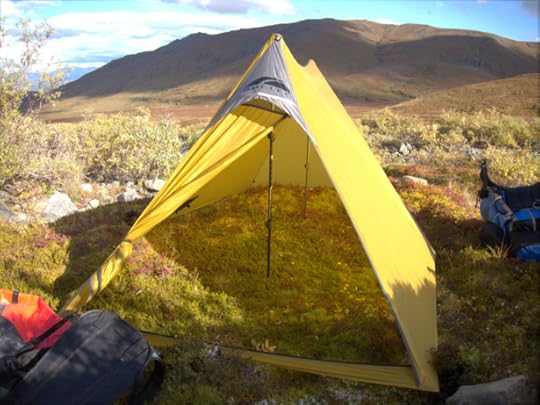
In this bipolar mid, the sleeping area is broken up by the poles, which restricts movement and prohibits snuggling. One pole also partially blocks the front door.
The High Route’s poles do not break up the sleeping area. They do partially block the door, but it’s a side-entry and the door is 6 feet long, so entry/exit is extremely easy. It’s far superior to a head-entry A-frame like the Hyperlite Mountain Gear Echo Tarp, and the door is wider than a side-entry A-frame like the Six Moon Designs Haven Tarp.
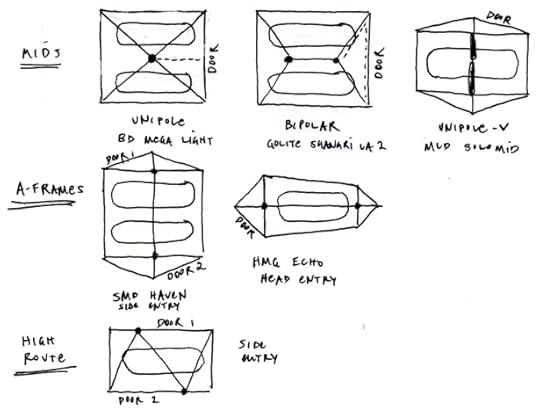
Five common pole configurations for mids and full-sided A-frames, plus the High Route.
Own a mid or a High Route, or contemplating the purchase of either? Leave a comment and share your thoughts.
Disclosure. This website is supported mostly through affiliate marketing, whereby for referral traffic I receive a small commission from select vendors, at no cost to the reader. This post contains affiliate links. Thanks for your support.
The post Shelter Comparison: Mids vs. the High Route Tent appeared first on Andrew Skurka.
March 8, 2017
Reader question: Are Cuben Fiber shelters & backpacks worth the cost?
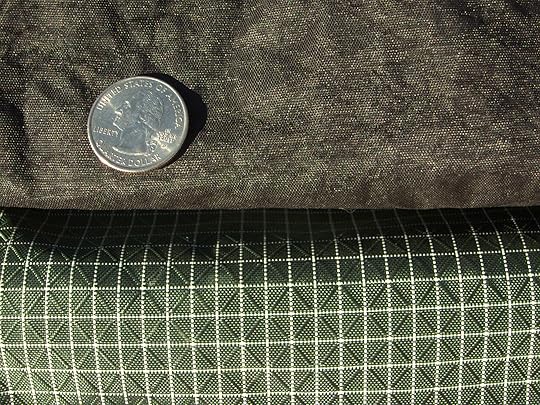
A question from reader Patrick H.:
I plan to buy a new tent and backpack, as part of a larger effort to reduce the weight of my gear. I’m attracted to the weight of Cuben Fiber, but I’m concerned about its durability relative to sil-nylon or Robic. Is it worth the premium price?
Most backpackers who look beyond REI while researching gear have probably learned of Cuben Fiber, either in a standalone conversation or as a fabric option for shelters, backpacks, and accessories made by cottage brands like Hammock Gear, Katabatic Gear, Mountain Laurel Designs and others.
Cuben stands out, partly because equipment made with it is exorbitantly expensive relative to comparable products made of more conventional fabrics. A few examples:
In Cuben, the MLD Cricket Tarp costs $335. In a premium sil-nylon, it’s $185.
The Hyperlite Mountain Gear Southwest 3400 costs $330. The ULA Ohm 2.0 costs $210.
A 5.6L Cuben stuff sack from ZPacks costs $20. A 5L sil-nylon stuff sack from Granite Gear costs $11.
These price tags beg the question: Is Cuben Fiber worth the cost?
What is Cuben Fiber?
Cuben Fiber, also known as Dyneema Composite Fabric (DCF), is a grid of Dyneema fiber — which is the strongest fiber in the world, at 15 times the strength of steel per weight — embedded in flexible polyester film. Imagine a painters plastic-type material that is remarkably waterproof, tear-resistant, and lightweight.
The most common versions of Cuben weigh 0.5 oz/yd2 and 0.75 oz/yd2.
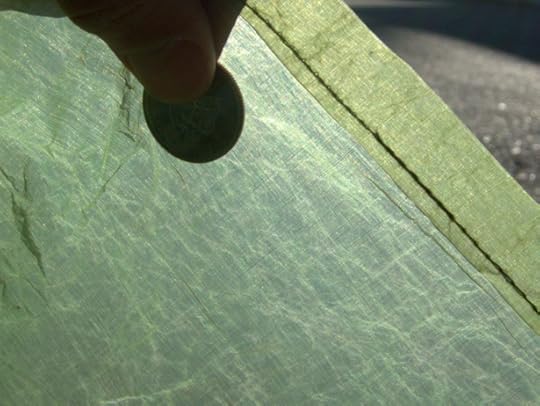
Cuben Fiber is a grid of Dyneema fibers embedded in a translucent and flexible polyester film. For its weight, it is exceptionally strong and waterproof.
Cuben can also be laminated to other fabrics, like a 50-denier polyester, to improve resistance to abrasion and puncture. These laminates weigh more, in the range of 3.0 to 5.0 oz/yd2, depending on the Cuben variety and the laminating fabric. ZPacks and Hyperlite Mountain Gear are both well known for their backpacks made of Cuben laminates.
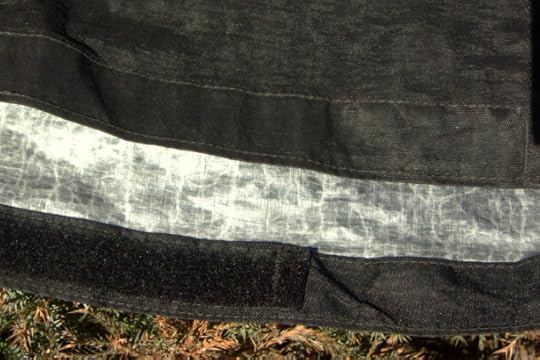
To improve its resistance to abrasion and punctures, Cuben (the clear shiny fabric) can be laminated to another fabric, such as a 150d polyester (the black fabric). The combination makes a worthy pack fabric. The Cuben is kept on the inside of the pack, where it is more protected.
Shelter fabrics
Conventional fabrics
Backpacking shelters are typically made of woven nylon or polyester. If the fabric must be waterproof — such as the case with a tent fly or floor — it is coated with polyurethane (PU), polyethelete (PE), or silicone (sil).
All things being equal, silicone results in the strongest and most waterproof fabric. However, pure sil-nylons cannot be seam-taped and do not meet fire-resistant standards for critical US markets like California and New York. So wholesalers like Sierra Designs, MSR, and REI use fabrics that are treated with silicone on one side and with PU or PE on the other.
I think that we will see fully seam-taped and fire-resistant sil/sil nylon available within a few years. But the technology is not yet commercial.
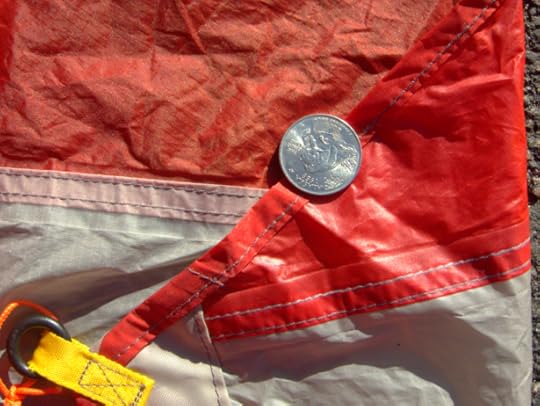
A conventional coated nylon that is treated with sil on one side (upper left half) and with PU or PE on the other (lower right half) so that it can be seam-taped and fire-resistant.
Today’s best coated woven fabrics weigh 1.0 to 1.5 oz/yd2 and have been rated up to 4,000 mm of hydrostatic head, several times in excess of “rainproof” standards. If the fabric performance is undisclosed — such as in the case of Big Agnes tent fabrics — you should assume that it is less.
In the case of hydrostatic head, more is better. A more waterproof fabric will withstand greater forces and will have a longer service life.
The quality of coated wovens is continually improving. I’m certain that the shelter fabrics I used on my longest trips are not as good as what I use and see today, while guiding trips and designing shelters with Sierra Designs.
Among active backpackers, coated wovens may have a trust issue. A high quality coated woven makes an excellent shelter fabric, but one bad experience with a low quality version (e.g. cheap or poor quality control) may create nervousness about the whole fabric category. Personally, I have never experienced “misting,” but I have had to replace multiple shelters because they were no longer reliably waterproof — they absorbed too much water, and in some cases would visually leak.
Cuben Fiber
As a shelter fabric, Cuben is very attractive — if you can afford it. A shelter made of Cuben will be:
Lighter by 30 to 50 percent, depending on the exact fabrics being compared and on the amount of non-fabric parts, e.g. zippers, buckles, struts.
As waterproof as the best coated nylons, with hydrostatic head ratings of 3,500+ mm.
The performance of Cuben will degrade over time due to use, UV exposure, repeated folding, and wet storage. But the lifespan is still excellent. Ron Bell at MLD estimates the functional lifespan of his shelters made with .75 oz/yd2 at around 250 “thru-hiker nights,” which assumes intense use and occasional wet storage. This is comparable to or in excess of standard coated nylons, which Ron puts at 300 to 500 nights depending on the quality.
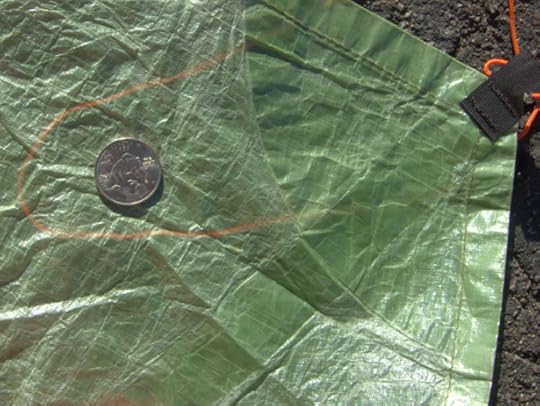
Cuben is an exceptional shelter fabric: it is ultralight and extremely waterproof.
Besides cost, weight, waterproofness, and tear strength, there are a few other noteworthy qualities of Cuben. First, it does not “stuff” small. The material is stiff relative to coated wovens, so it needs to be folded for it to pack away small.
Second, Cuben does not stretch. This results in a less forgiving pitch — the tension and anchor points must be perfect — but the shelter will stay taut until the morning. Sil/sil nylon is especially stretchy, and a pre-bed and sometimes middle-of-the-night adjustment is necessary, especially in wet or humid conditions. Obviously, this could get annoying.
Third, the surface of Cuben is less slick than coated wovens, so more snow tends to stick to it. I’ve had multiple Cuben shelters on my winter guided trips with no issues; the coated nylon shelters nearby have fared better, but not dramatically so.
I have had mixed experiences (and have heard mixed reports) about the water absorption of Cuben versus coated wovens. With use, I think you should expect both fabric types to absorb more water than when new.
Is Cuben worth it?
Without knowing your budget or your expected use, I can’t tell you if a shelter made of Cuben is worth the premium price. But hopefully you now have the information necessary to decide.
If you need some help deciding, leave a comment below with an explanation of your situation.
Pack fabrics
The weight and performance of a shelter, especially common designs like A-frame tarps, is largely a function of its fabric.
This is not the case with backpacks. I can think of at least a handful of considerations that I prioritize above the pack fabric, including:
Fit/comfort,
Suspension/load-carrying ability,
Pockets,
External utility and compression, and
Volume.
Conventional fabrics
Premium conventional pack fabrics may be branded as Cordura, Dyneema, Robic, and X-Pac. They are all woven nylons, perhaps with a reinforcing gridstop of an exceptionally tough or thick fiber. They can be coated with PU or sil to improve resistance to water, abrasion, and tearing.
For long-term abuse, I would avoid any fabric less than 100 denier.
As a thru-hiker I put serious miles on a handful of packs. For example, I used one GoLite Jam for the length of my 7-month 6,875-mile Great Western Loop trip. And I used the ULA Epic for about two-thirds of my 6-month 4,700-mile Alaska-Yukon Expedition. The packs were made of 210d Dyneema and 210d Robic, respectively. These are high quality fabrics, but reasonably priced and widely available.
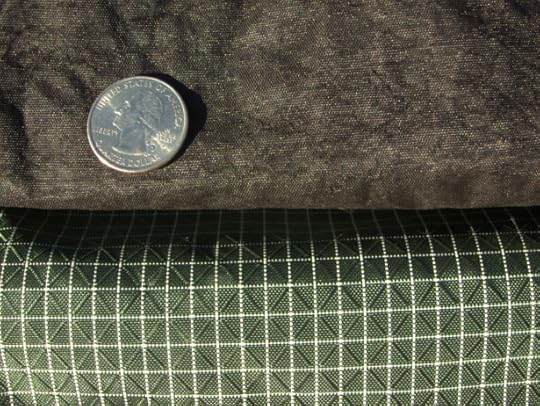
Top: A Cuben laminate with 150d black face polyester face fabric. Bottom: The 210d Robic nylon that is standard on ULA packs.
Cuben Fiber
On its own, Cuben Fiber is an inferior pack fabric, unless you are okay with:
Disposable gear, or,
Babying your backpack.
Why? Because Cuben has poor resistance to abrasion and puncture. For its weight, it’s pretty good, but for my uses I would never buy a pack made only of Cuben, even the heaviest version of it — it would get trashed by a few bushwhacks or rough bumps against granite.
Cuben laminates — whereby Cuben is glued to another fabric, like a 50d polyester — are another story. Their performance is more comparable to the premium woven nylons mentioned earlier, and some would argue that they are even better. The supposed value-added:
Weight-savings,
Greater tear-strength, and,
Waterproofness.
But I think this argumentation is dubious:
1. A pack made of a Cuben laminate will be marginally lighter, by perhaps 5 percent. The reason: the pack fabric constitutes just a small fraction of the overall pack weight. Most of the weight of a pack is its suspension, hipbelt, shoulder straps, and buckles and straps.
2. Based on past performance, standard woven nylons have proven to have sufficient durability for hard, multi-month trips.
3. With extended use, Cuben laminate packs will not remain waterproof. So, as with a pack made of woven nylon, you will need to waterproof your gear. I recommend using a 20-gallon trash compactor bag as a pack liner.
Is Cuben worth it?
If you find a Cuben laminate pack that fits you perfectly and that has your exact wish list of features, go for it.
But I would strongly discourage limiting your search to packs only made of Cuben. They are not functionally lighter or tougher than packs made of conventional woven nylons, and you will pay $50-100 more for it.
Your turn: Do you think that Cuben Fiber is worth the price? Leave a comment.
Disclosure. This website is supported mostly through affiliate marketing, whereby for referral traffic I receive a small commission from select vendors, at no cost to the reader. This post contains affiliate links. Thanks for your support.
The post Reader question: Are Cuben Fiber shelters & backpacks worth the cost? appeared first on Andrew Skurka.
March 3, 2017
Final Friday Giveaway: Ultimate Hiker’s Gear Guide || Plus, Flex Capacitor winners!


Big shipment #1 of 2. Ready for the PO.
Next week the second edition of The Ultimate Hiker’s Gear Guide will be officially released.
If you pre-ordered a copy from me, it was shipped earlier this week. If you order one now, it will be shipped within 24 hours. If you ordered the hardcopy or Kindle edition from Amazon, it will ship or downloaded on March 7.
Multiple copies of the Gear Guide have been given away already. Most recently, Sierra Designs awarded two people with the Gear Guide and a new Flex Capacitor 40-60 Pack. Congrats to the winners:
Laura H. of Denver, and
Tom T. of Benton, Miss.
Final giveaway
For those unlucky so far, I’ll do one more giveaway. The winner will be drawn tomorrow morning at around 8 AM MST, before Amanda and I take off for spring skiing at nearby Eldora.
The giveaway is now closed. The winner was Ricky R, lucky #306.
Disclosure. This website is supported mostly through affiliate marketing, whereby for referral traffic I receive a small commission from select vendors, at no cost to the reader. This post contains affiliate links. Thanks for your support.
The post Final Friday Giveaway: Ultimate Hiker’s Gear Guide || Plus, Flex Capacitor winners! appeared first on Andrew Skurka.
March 2, 2017
Review: Men’s Nike Hypercool Compression 6″ Short
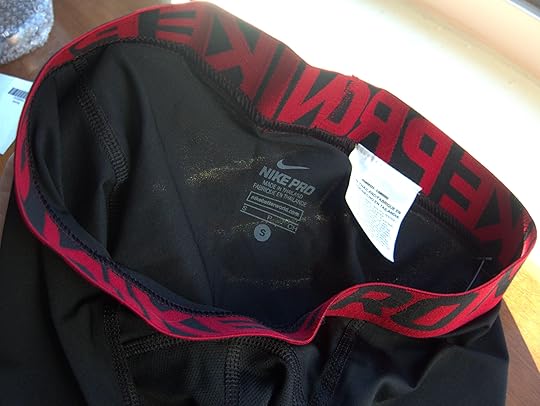
While I was researching for my recent review of the Under Armour Sonic Compression Short, I saw a new (at least to me) model from Nike that looked similar to the original Pro Combat Short, which I had worn before the Sonic. I was disappointed when Nike replaced it with the Pro Combat 2.0 Short, which were too thin to be used as standalone running shorts.
Sadly, the Nike Hypercool Compression 6-inch Short, which retails for $28, is not a suitable replacement for the Sonic Short or the original Pro Combat Short. They are simply too sheer to serve as standalone running shorts. They are best layered underneath other shorts or pants.
If I were recommending underwear, however, I would point you to the Jockey Men’s Sport Mesh Midway Brief, which are $10 less and comparably constructed.

The Hypercool fabric is so sheer that my fingers can be seen through it.
Even if the fabric had not been a deal-breaker, the fit may have been. The Small is supposedly for 29-31 inch waists. I’m a solid 29 right now, yet I could not pull the Hypercool over my knees without a fight. With a 10 percent spandex content, I’m sure that I could have pulled them on, but probably at the detriment to their lifespan — when stretched excessively, a thin fabric will not last long.
Disclosure. This website is supported mostly through affiliate marketing, whereby for referral traffic I receive a small commission from select vendors, at no cost to the reader. This post contains affiliate links. Thanks for your support.
The post Review: Men’s Nike Hypercool Compression 6″ Short appeared first on Andrew Skurka.
February 26, 2017
Worth a look: SD’s spring clearance, up to 50% off || And, High Route back in stock
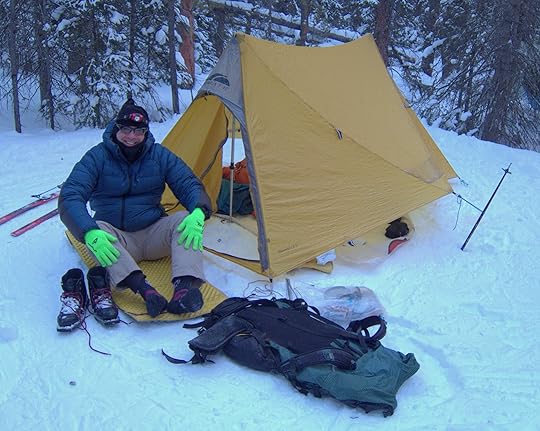

Smiling in -10 F in Rocky Mountain National Park in late-February, and not just because Dave is a happy guy. His baffled parka is a must-have for winter hiking and camping.
First off, the High Route Tent is back in stock, as of Friday. If we sell through this inventory, we have a bigger batch arriving in early-April.
Next, Sierra Designs is clearing out their inventory in advance of new arrivals. The High Route Tent and Flex Capacitor 40-60 Pack are among the few items that are not on the sale list, which otherwise includes most tents, sleeping bags, and men’s and women’s apparel.
If I were doing personal shopping, here are the items I would most consider:
Elite DriDown Hoody, now $124 (XL and XXL only). An ideal 3-season jacket for the Mountain West, or cooler season in the East.
Elite DriDown Parka, now $175. For winter trips in cold temperatures, and fall hunting trips when you’re not generating much body heat.
S/S Pack Polo, now $34. The long-sleeve version is my go-to for milder temperatures in the West (read my long-term review). The short-sleeve is more suitable for the East, or for those who are willing to regularly apply sunscreen. The same selling points apply: unmatched air permeability, quick dry, good looks. The treated polyester has proven more stink-resistant than conventional polyester, but it’s not as good as wool.
Mobile Mummy 30-deg 800, now $210. For most of my trips I use a quilt, except when temperatures will be regularly below freezing — at that point, quilts are simply too drafty to be comfortable. So I have a mummy in my closet for these colder temperatures. This Mobile Mummy has a lot of things going for it — just $210 and 1 lb 11 oz, and many features that make it more versatile than a conventional mummy, e.g. front zip, arm ports, and a jacket-style hood.
Disclosure. This website is supported mostly through affiliate marketing, whereby for referral traffic I receive a small commission from select vendors, at no cost to the reader. This post contains affiliate links. Thanks for your support.
The post Worth a look: SD’s spring clearance, up to 50% off || And, High Route back in stock appeared first on Andrew Skurka.
February 24, 2017
Long-term Review || Running favorite: Under Armour HeatGear Sonic Compression Shorts
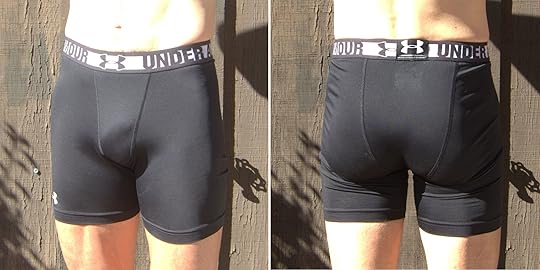

For long runs when I cannot risk chafing, and for runs in temperatures colder than about 55 degrees, my go-to has been the Under Armour Sonic Compression Short. Left: Run Rabbit Run 100, a 20-hour ultra. Right: Colorado Marathon in temps just above freezing.
For the past three years the Under Armour HeatGear Sonic Compression Short has been my go-to running short. After 500+ runs — including my biggest races like Run Rabbit Run 100, the Colorado Marathon, and San Juan Solstice 50 — I feel very confident in writing a long-term review.
I use the Sonic Shorts primarily for:
Temperatures below 55 degrees, when I find conventional split running shorts too drafty;
Temperatures below 35 degrees, when beneath my full-length tights I want supportive and thin underwear with mid-thigh coverage; and,
Any run longer than about 2 hours, when I cannot risk any chafing.
Of the three pairs of Sonic Shorts that I have purchased (with personal funds), two are still fully operational. The first pair no longer provides satisfactory performance due to lost elasticity.
Availability
The Sonic Shorts are still available on Amazon, for about $20.
However, officially they have been replaced with the HeatGear Armour Compression Shorts. I have confirmed with UA that most everything is the same: fabric, inseam, patterning, seam types, etc. They changed the waistband and made a claim about “better construction” but had no additional details.

The Sonic Shorts are more “tight shorts” than “compression shorts,” especially after a few wears. I find them comfortable and supportive enough for multi-hour runs.
Onto the pros and cons:
Price
At $25 MSRP the Sonic Shorts are attractively priced. But they are very basic: one fabric, simple patterning, and a jockstrap-like waistband. Do not expect a built-in brief or even an accessory pocket.
Sizing and compression
I have a 29- or 30-inch waist, depending on the training cycle and the cut of my jeans. The Sonic Short in size Medium (30”-32”) are true to size. They fit very snugly at first — legitimate “compression” — but they loosen up within a few wears and become comfortable “short tights.”
Inseam
The Sonic Short is spec’d with a 6-inch inseam. I would have thought this would only be the case with the sample size (normally, Large) but my size Medium have a 6-inch inseam, too.
I think 6 inches is the perfect length. It’s long enough to prevent chafing and to keep my legs warm in brisk temperatures, but not so long that the hemline bothers the tendons above my knee.
Fabric thickness
The single best feature of the Sonic Shorts is the fabric. It’s a run-of-the-mill 84 percent polyester/16 percent spandex blend, but these shorts are a perfect application for it. It’s:
Stretchy and conforming, but still adequately supportive; and,
Thin and cool, but not too sheer or revealing (double-layer construction in the groin helps).
I much prefer the Sonic fabric to that used in the R-Gear SpeedPro Shorts, which is thicker and has 30 percent more spandex (79/21 blend). Those shorts are less supportive (too much stretch), less comfortable in warmer temperatures (too heavy and too much moisture retention), and less long-lasting because the elasticity loses its rebound.
Patterning
My single gripe of the Sonic Short — and it’s a big one — is its patterning. It seems anatomically oblivious, designed to fit a mannequin, not a male with balls and a penis.
Preferably, I’d like a “pouch” to hold my reproductive organs. But in the Sonic Short, it must be directed to the left or right, possibly across a flatlock seam (which is smoother than other seam types but rougher than plain fabric). Everything is held in place by the stretchy fabric, although occasional adjustment will be necessary depending on the weather and fit.
I have considered wearing underwear beneath the Sonic Short, essentially replicating the UA Run True Half Tight, which has a built-in brief. But I’ve always erred on the side of simplicity and a single lightweight fabric, and can only recall an instance or two when I had some minor chafing.
Buy the Sonic Short now from Amazon
Disclosure. This website is supported mostly through affiliate marketing, whereby for referral traffic I receive a small commission from select vendors, at no cost to the reader. This post contains affiliate links. Thanks for your support.
The post Long-term Review || Running favorite: Under Armour HeatGear Sonic Compression Shorts appeared first on Andrew Skurka.
February 21, 2017
Reader question: Should I change my High Sierra itinerary due the heavy snowfall?
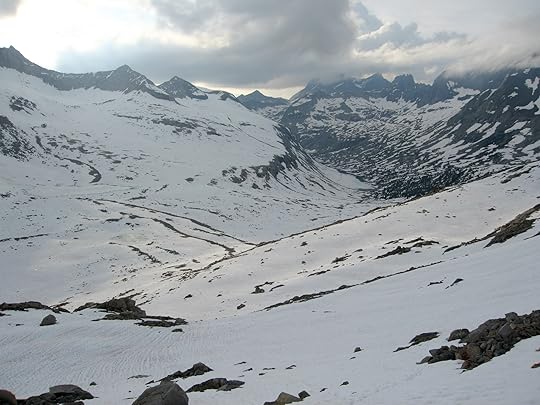

Extensive snow coverage on the north side of Mather Pass, looking towards Palisade Lakes, after a very wet winter. Taken June 28, 2006.
A reader question from Gabino:
In August I was planning to hike the Pacific Crest Trail through the High Sierra from South Lake Tahoe to Horseshoe Meadow. But all of this rain & snow has me concerned about lingering snowfields, high stream crossings, and late mosquitoes. Should I reschedule to September, instead?
I’m sure that every backpacker planning to undertake the PCT, JMT, Sierra High Route, Kings Canyon High Basin Route, or any other high-elevation route in California’s High Sierra is wondering the same thing right now. Here are some thoughts:
California’s snowpack: The Facts
There are many ways to record and analyze the snowpack, but I’ve always liked these snowpack plots from California’s Department of Water Resources. They show the current snowpack relative to the “average” winter, or to actual past winters.
If you have backpacked in the High Sierra for many years, this “percentage of average” figure can be used to accurately predict summertime conditions. CDWR divides the Sierra Nevada into three main watersheds. The High Sierra is encompassed mostly by Central and South.
In the charts below, you can see that more snow blankets the Sierra Nevada right now than anytime since the winter of 2011-12. Of course, several of these years were droughts, with the 2014-15 winter being the driest ever recorded.
This winter is tracking more closely to the biggest winters in recent memory — 2004-05, 2005-06, and 2010-11. And in the central and southern parts of the Sierra Nevada, it is on par with the wettest winter ever, 1982-83.
And the winter is not over yet
The snowpack typically peaks on April 1. In an average year, before April 1 more snow falls than melts; and, after April 1, more snow melts than falls. But wet winters tend to be longer, and the snowpack often does not peak until mid- or late-April.
Right now it’s only late-February and the snowpack is already well above its April 1 average. Even if the snow-machine turned off tomorrow, there is already so much snow on the ground that conditions will probably at least be “average” in the summer. More likely, however, snow will continue to fall and it will be a late spring.
Conditions after a wet winter
A wet winter presents a few obstacles for summertime backpacking.
Lingering snowpack
The High Sierra has a few glaciers and permanent snowfields. Everywhere else, the snowpack melts off completely. After a wet winter, it simply takes longer for the snow to melt.
Early-season hikers are affected most, with several miles of lingering snow on both the north and south sides of major passes. Look at the photo at the top of this page for a good example.
Sometime in June the snow becomes consolidated, and you can walk on top of it. But before that point, it rots in the afternoon (after the sun and warm temperatures melt the crust from the night before) and arduous post-holing ensues.
But even after it’s consolidated, the High Sierra snowpack is rarely pleasant. It becomes covered in small depressions (“sun cups”) that make for tedious walking.

Annoying sun cups near Selden Pass
High water and wet meadows
During peak runoff — normally in June, when temperatures are finally high enough to cause extensive melting — the rivers will be scary. At the right place and time of day, some will be pretty scary in July, too.
The creek flows are cyclical. In the morning, when temperatures are low and the sun is barely up, there is relatively little runoff. In the afternoon, after a full day of warm temperatures and intense sunshine, there is a lot. Plan your days around the creek crossings. And learn to read your map to identify safer ford locations — the trail is designed for July-September conditions, not June, and not July after a very wet winter.
By August the water levels should be manageable. When I did the JMT in 2010-11 after a big winter, there were only two crossings where we had to get our feet wet. Elsewhere, there were constructed bridges, downed trees, and rock steps.

In late-June 2006 I crossed Evolution Creek at the meadow about a half-mile above the trail crossing. Here, at 5 PM, it was MUCH safer. The trail crossing would have been a swim.
Mosquitoes
Normally the High Sierra mosquitoes peak in July, and dwindle or die-off in August as the meadows dry up. I would expect a late hatch, because they can’t come out until the ground is snow-free; and they will probably persist through August, until the first frosts of September.
Thankfully, mosquitoes can be managed. Some reading:
The Ultimate Hiker’s Gear Guide || Chapter 1: Clothing (newest info)
Core Clothing || Item #3: The Bug Shirt
Clothing system for peak mosquito season
Tips for Coping with Horrific Mosquitoes

Learn to manage mosquitoes, or your back will look like this. Donohue Pass, August 2011.
Should you change your itinerary?
Without knowing more about your situation, I can’t answer that for you. If you want some specific feedback, leave a comment below. Given the current conditions, I don’t expect any unprecedented challenges for 2017 hikers — we’ve seen these conditions before, although not often.
Some specific predictions:
May: Bring skis.
June: Anticipate extensive snow coverage at the higher elevations, and high water crossings, especially in the afternoons. Earlier in the month, the snow will often be rotten in the afternoon. Later in the month, most of it will have consolidated but it will be sun-cupped.
July: The snowpack will melt off and the creeks will come down, but the mosquitoes will hatch.
August: The first month of “normal” backpacking in the High Sierra, but with heavier bug pressure. It will be more like July.
Finally, September will be the nicest month of the year:
No lingering snow, high water, or mosquitoes;
Fewer people, especially after Labor Day; and,
Cooler daytime temperatures and a less intense sun.
Of course, September is always the nicest month, except when the High Sierra is on fire.
The post Reader question: Should I change my High Sierra itinerary due the heavy snowfall? appeared first on Andrew Skurka.
Giveaway: Win a Flex Capacitor Pack & The Ultimate Hiker’s Gear Guide
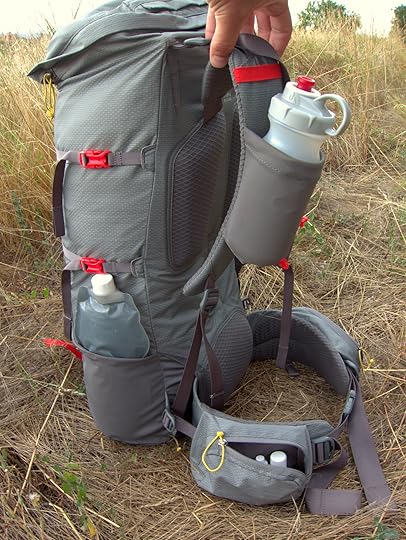
Sierra Designs is putting on a giveaway that you’ll want to get in on, through this Thursday (Feb 24). Enter to win a Flex Capacitor 40-60 Pack and a signed copy of The Ultimate Hiker’s Gear Guide.
Enter here at SierraDesigns.com
Update. This contest has closed.
Congrats to the winners:
Laura H. of Denver, and
Tom T. of Benton, Miss.
The post Giveaway: Win a Flex Capacitor Pack & The Ultimate Hiker’s Gear Guide appeared first on Andrew Skurka.
February 20, 2017
Inventory update: High Route Tent

Update (Feb 26): The High Route is currently back in stock.
For about a month the Sierra Designs High Route Tent has been unavailable:
The gearing-up season has already started, and I’ve received a few direct inquiries about when it will become available again, which means that probably a few more people are wondering the same.
The answer: Not long. Here is the official line from SD:
Some units are being air-shipped this week, and will be back in stock later this week (Feb 24th-ish) or early the following week.
The remaining balance will ocean ship and be available April 1-15th.
The post Inventory update: High Route Tent appeared first on Andrew Skurka.





